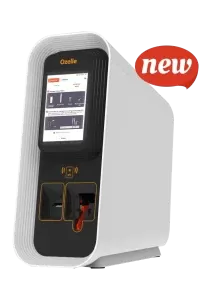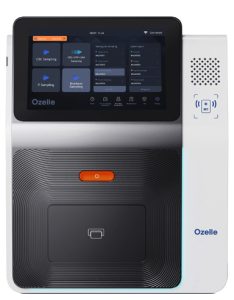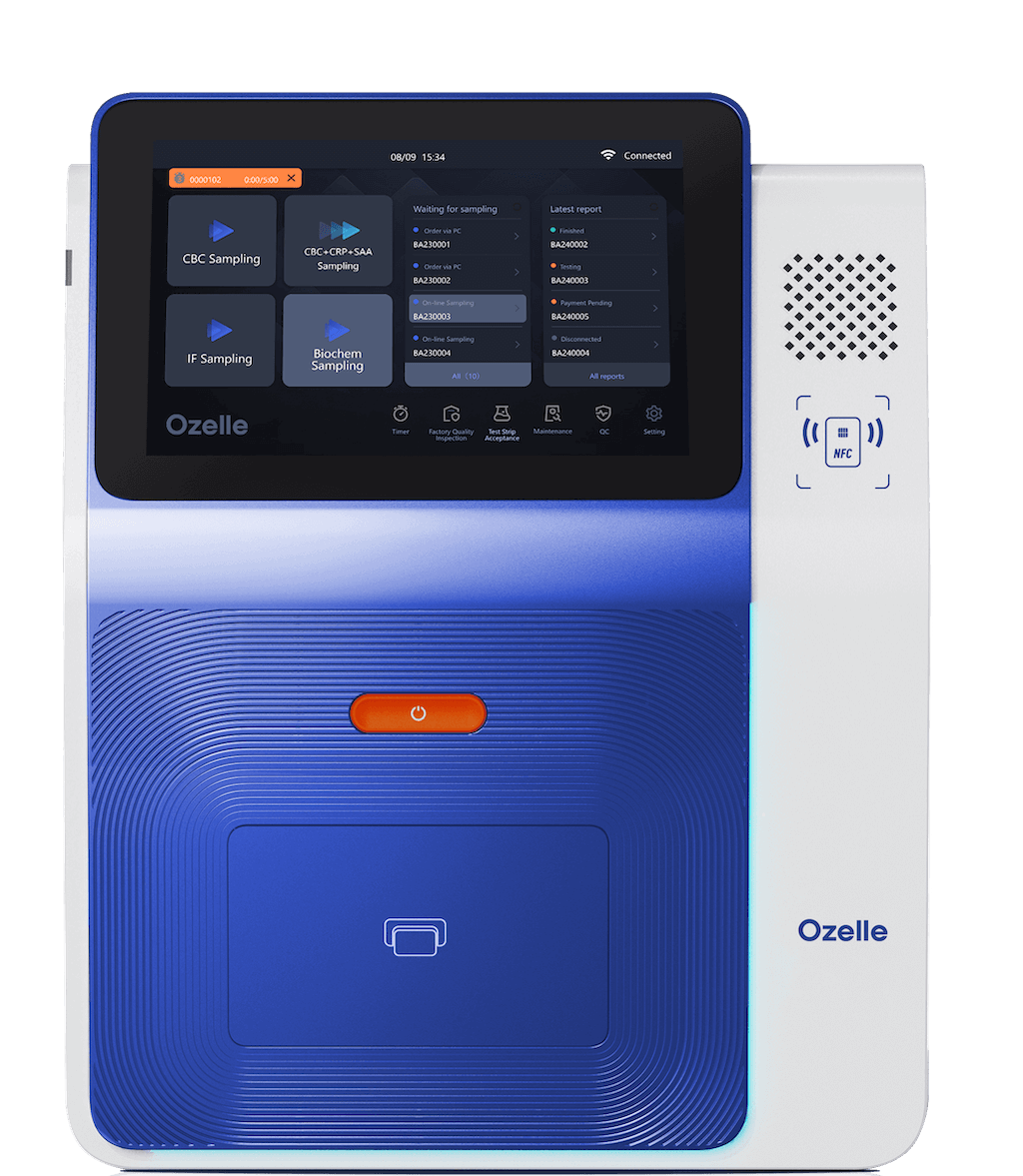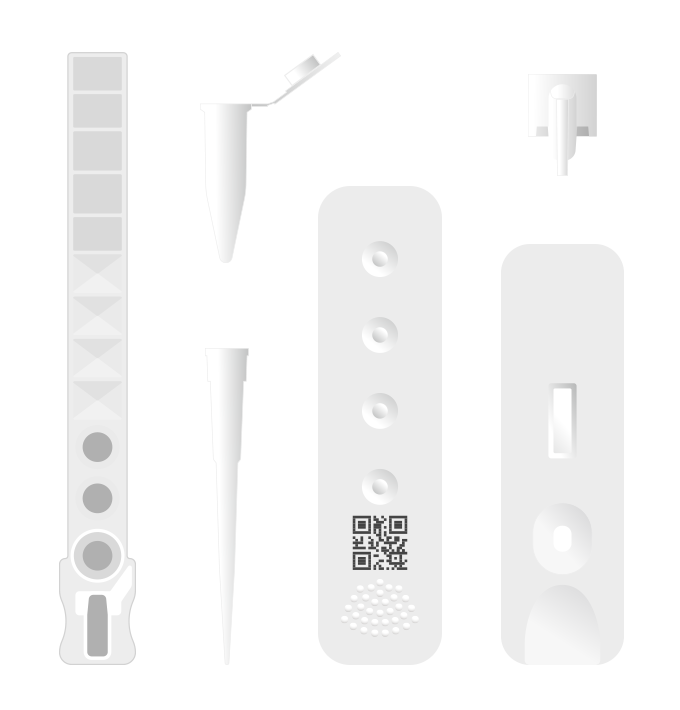Introduction & Executive Summary
Selecting a veterinary hematology analyzer ranks among the most important equipment decisions a practice can make. The right analyzer accelerates diagnostic efficiency, improves patient outcomes, and strengthens your clinical decision-making. Yet with dozens of models available, equipment costs ranging from $1,700 to $10,000+, and consumable expenses consuming 60-70% of total operating costs, the stakes are high.
This guide walks you through the essentials: understanding your practice needs, evaluating core technologies, calculating true costs, and selecting the vendor partnership that ensures long-term success.
Quick Assessment Tool: What’s Your Practice Type?
- Small animal clinic (20-50 samples/day): Need rapid blood screening + occasional urine/fecal testing
- Mixed animal practice (50-150 samples/day): Managing diverse species and multiple sample types
- Emergency hospital (100+ samples/day): Require high-throughput with 100% reliability
- Rural/resource-limited clinic: Face space constraints and limited technical staff
Identify your practice type above—it shapes every recommendation that follows.
Understanding Your Veterinary Practice Needs
Facility Type Classification
Small Animal Clinics (20-50 samples/day)
Require 3-part differential with 15-21 core parameters for rapid blood screening plus opportunistic urine/fecal testing. Compact analyzers (under 20 kg) suit limited counter space.
Mixed Animal Practices (50-150 samples/day)
Need 5-part differential supporting species-specific reference ranges (dogs, cats, horses, rabbits, cattle). Multi-functional platforms integrating CBC, immunoassay, urine, and fecal analysis reduce equipment duplication while enhancing diagnostics.
Emergency Hospitals (100+ samples/day)
Demand 30-60 samples/hour throughput with 7-part differential and AI morphology. LIS integration and backup analyzers ensure reliability—patient triage cannot tolerate downtime or delayed results.
Rural/Resource-Limited Clinics
Require maintenance-free analyzers with single-use cartridges eliminating calibration complexity. Portable devices (8-12 kg) with 5-part differential, room-temperature storage, and no cold-chain requirements suit severely resource-constrained environments.
Integrated Platform Advantage: Multi-parameter diagnostics (7-part differential + immunoassay + urinalysis) compress multiple devices into one, accelerating clinical decision-making across all clinic types.
Testing Volume & Peak Demand Assessment
Calculate your daily sample volume across all testing modalities. Record samples per hour during peak periods (typically mid-morning and early evening in most practices). Factor in concurrent testing demands—if you run urine analysis while processing CBC samples, throughput effectively divides between channels. Many practices underestimate peak demand, resulting in bottlenecks precisely when time-sensitive results matter most.
A simple calculation: If your clinic performs 40 samples on average days but 80 samples on Saturdays, your analyzer must handle 15-20 samples/hour sustained throughput. This informs equipment selection. Undersizing analyzer capacity leads to manual backup testing and extended result times; oversizing creates unnecessarily high consumable costs.
Clinical Applications by Species Served
Hematology Parameters (38-parameter 7-part differential CBC)
A complete cell morphology analysis detects abnormal cells including immature neutrophils, reticulocytes, and abnormal lymphocytes—morphological markers that traditional impedance-based analyzers miss. Modern AI-enhanced analyzers capture cell images and apply deep learning algorithms trained on millions of clinical samples to identify pathological patterns. This capability is transformative for canine leukemia screening, feline infectious anemia diagnosis, and infection severity assessment.
Urine Testing
Standard urine parameters include casts, cells, crystals, and microorganism detection. From a clinical standpoint, urine analysis identifies kidney disease, urinary tract infection, and metabolic disorders (diabetes, hyperadrenocorticism). Analyzers that simultaneously process urine samples eliminate the need for manual microscopy in many cases.
Fecal Analysis
Parasite egg identification (hookworms, tapeworms, Giardia) and intestinal protozoa assessment remain essential for mixed animal practices. Modern analyzers distinguish parasite morphology through imaging, enhancing diagnostic confidence. Microbial and food residue evaluation screens for secondary infections and dietary assessment.
Integrated Immunoassay
Species-specific disease markers include feline leukemia (FeLV Ag), feline immunodeficiency virus (FIV Ab), feline coronavirus (FCoV), canine parvovirus, and canine distemper. Organ dysfunction markers—kidney biomarkers and cardiac troponins—inform prognosis and monitoring. Multi-functional analyzers that integrate immunoassay eliminate sample turnaround delays inherent when sending tests to reference laboratories.
Staffing & Training Capacity
Operator training time varies dramatically between analyzer types. Simple 3-part analyzers require 2-4 hours of training; advanced 7-part systems with AI morphology may require 6-8 hours plus ongoing competency validation. Consider your laboratory staffing stability and turnover rates. High staff turnover argues for user-friendly interfaces and simplified workflows. Practices with stable lab personnel can invest in feature-rich systems requiring deeper expertise.
Veterinary Hematology Analyzer Core Technology Options
Differential Capability Levels
5-Part Differential: Enhanced diagnostics distinguishing eosinophils and basophils. Better suited for mixed practices evaluating allergic responses, parasitic infections, and eosinophilic disorders. Result time typically 6-10 minutes per sample.
7-Part + AI Morphology: Emergency and specialty hospitals benefit from advanced classification of abnormal cells (immature neutrophils, abnormal lymphocytes, atypical monocytes). AI image recognition identifies morphological patterns indicating malignancy, severe infection, or bone marrow disorders. Result time approximately 6 minutes per sample despite analytical complexity.
Maintenance Architecture
Maintenance-free cartridge systems represent a fundamental shift from traditional pipeline-based analyzers. Traditional systems require daily flushing, monthly calibration, and quarterly maintenance protocols—labor-intensive procedures creating downtime risk. Cartridge systems use single-use, pre-loaded test modules that eliminate liquid pipelines, eliminating the contamination and maintenance burden.
Key operational differences: Cartridge systems reduce training requirements (no maintenance procedures to teach), eliminate service calls (dry QC cards stored at room temperature), and support seamless upgrades through firmware updates rather than hardware changes. For rural clinics and practices with limited technical staff, this architectural advantage justifies premium pricing.
Capacités d'intégration
Laboratory Information System (LIS) connectivity enables automated result entry, reducing manual transcription errors and accelerating clinician notifications. WiFi-enabled analyzers support remote troubleshooting, software updates, and performance monitoring. Data management systems that archive 50,000-300,000 results with histograms and scatter diagrams provide compliance documentation and clinical audit trails.
Veterinary Hematology Analyzer Key Specifications Evaluation Checklist
When evaluating specific models, assess these essential specifications:
- Throughput (samples/hour): Does the analyzer meet your peak demand volume? Remember that concurrent testing reduces effective throughput.
- Sample volume requirements: Small volumes (9-30 µL) matter for pediatric cases and small exotic animals. Large volumes (50-100 µL) simplify collection but may not suit all patients.
- Result time: Does the analyzer deliver results within your clinical workflow timing?
- Parameter reporting: Verify the analyzer reports all parameters relevant to your practice (immature cell counts, reticulocyte data, specific parasite identification).
- Species-specific protocols: Confirm the analyzer supports all species your practice serves (cats, dogs, horses, rabbits, exotic pets).
- Integration compatibility: Verify LIS connectivity protocols and IT infrastructure requirements before purchase.
Veterinary Hematology Analyzer Cost Analysis: Total Cost of Ownership
Equipment price represents only 30-40% of total costs over a five-year ownership period. Consumables, maintenance, and support dominate true operating expenses.
Veterinary Hematology Analyzer Equipment Cost Tiers
Mid-tier ($3,000-$6,000): 5-part or 7-part analyzers with multi-functional capability (CBC + immunoassay + urine + fecal). Throughput typically 10-30 samples/hour. Best for mixed practices and small emergency hospitals requiring diagnostic breadth.
Premium ($6,000-$10,000+): AI-enhanced 7-part differential analyzers with advanced morphology imaging, high-throughput capability (30-60 samples/hour), and sophisticated LIS integration. Designed for emergency hospitals and reference laboratories.
Consumable Costs
Consumable expenses typically consume 60-70% of five-year total operating costs. Calculate cost-per-test by dividing annual reagent expenses by projected annual sample volume. For example:
Annual consumable cost: $8,000
Projected annual samples: 10,000
Cost per test: $0.80
Compare this to reference laboratory pricing ($5-15 per test depending on panel complexity). Equipment costing $4,000 with $0.80 per-test consumable becomes financially justifiable within 12-18 months for practices exceeding 30-40 samples daily.
Veterinary Hematology Analyzer Maintenance & Support
Maintenance-free cartridge systems eliminate traditional service contracts (typically $1,500-$3,000 annually for traditional analyzers). However, evaluate warranty coverage, training scope, technical support availability, and vendor responsiveness to equipment issues.
Quick Veterinary Hematology Analyzer ROI Calculator
Example: A mixed animal practice performing 50 tests daily (250 working days annually = 12,500 tests annually):
- Equipment cost: $5,000
- Consumable cost per test: $0.75
- Annual consumable expense: $9,375
- Reference lab cost per test: $8
- Annual reference lab cost (if using external labs): $100,000
Cost savings by purchasing in-house analyzer: $90,625 annually
Equipment ROI (break-even): 5,000 ÷ 90,625 = 5.5% of annual savings = approximately 3 weeks
This calculation clarifies why even modestly busy practices justify analyzer investment within months.
Veterinary Hematology Analyzer Comparison by Practice Type
Mixed Animal Practices
Recommended specs: 5-part differential with 25-30 parameters, 10-20 samples/hour throughput, multi-functional capability (CBC + urine + fecal analysis).
Key consideration: Reference range validation for each species. Dog reference ranges differ significantly from cat, horse, and rabbit values. Advanced analyzers include species-specific reference ranges in software; verify this before purchase.
Example: EHVT-50 veterinary analyzer integrates 7-part hematology with immunoassay (feline leukemia, feline immunodeficiency, canine parvovirus), urine analysis (29 parameters including casts, cells, crystals, microorganisms), and fecal analysis (29 parameters including parasite identification). Single-use wet staining kits prevent cross-contamination while eliminating maintenance pipelines.
Emergency Hospitals
Recommended specs: 7-part differential with AI morphology detection, 20-60 samples/hour throughput, LIS integration, integrated immunoassay capability.
Key benefit: Rapid complex case diagnostics. When a critically ill patient arrives with sepsis, trauma, or suspected neoplasia, emergency hospitals need CBC results within minutes—not hours. 7-part differential with AI morphology imaging identifies immature cell types, abnormal morphology, and rare cell populations that guide immediate clinical decisions. Parallel urine and immunoassay testing on the same sample accelerates multi-parameter diagnostics.
Rural Clinics
Recommended specs: Portable 3-part analyzer (under 12 kg), maintenance-free cartridge design, minimal infrastructure needs, room-temperature reagent storage, no cold chain requirement.
Key benefit: No service dependency. Rural clinics often lack local technical support. Analyzers designed for this segment feature one-button operation, automatic fault detection, and simple troubleshooting. Single-use cartridges eliminate the need for scheduled maintenance. Dry QC cards stored at room temperature simplify inventory management compared to liquid QC systems requiring refrigeration.
Veterinary Hematology Analyzer Workflow Implementation Essentials
Planification avant la mise en œuvre
Space requirements: Reserve 4-6 square feet of dedicated counter space with electrical outlet access, stable environmental conditions (18-25°C, less than 70% humidity), and proximity to sample collection areas. Avoid placement near direct sunlight or heating/cooling vents.
Staff training timeline: Allocate 2-4 hours for operator training on basic functions (sample loading, quality control, result interpretation). Additional 2-4 hours for advanced features (parameter customization, species-specific protocol adjustments, troubleshooting). Schedule training during low-volume periods to minimize workflow disruption.
LIS compatibility verification: Before purchase, verify that your analyzer communicates with your existing practice management system. Confirm HL7 protocol compatibility and bi-directional data flow capability. Incompatible systems create manual workarounds that negate automation benefits.
Training & Competency
Operator qualification requirements: Designate 2-3 primary operators and cross-train 1-2 backup operators. Document training completion and competency validation. Many analyzers include built-in competency assessments or proficiency testing integration.
Ongoing competency assessment: Schedule quarterly competency reviews. Ask operators to run quality control samples and verify results against expected ranges. Monitor cost-per-test and equipment uptime metrics monthly.
Quality Control & Performance Monitoring
Daily QC protocol: Run QC samples (typically provided by equipment manufacturer) at analyzer startup and after any maintenance procedure. Document results. Modern systems flag out-of-range QC results automatically, preventing invalid patient results.
Proficiency testing participation: Subscribe to proficiency testing programs (such as those offered by veterinary diagnostic associations) to validate analyzer performance against external laboratories. Most programs ship samples monthly; results comparison identifies performance drift.
Monthly cost-per-test tracking: Divide monthly consumable expenses by monthly sample volume. Track trends—rising costs may indicate increased wastage or reagent inefficiency. Declining throughput signals need for equipment inspection.
Conclusion
Veterinary hematology analyzer selection demands careful analysis of practice type, diagnostic scope, testing volume, and total cost of ownership. The analyzer that accelerates diagnosis and strengthens patient outcomes justifies its investment within months for most active practices. Prioritize vendor support quality and long-term partnership potential—equipment is ultimately less important than the vendor relationship ensuring reliable diagnostics for years to come.
Match analyzer specifications to documented practice needs, calculate true ownership costs including consumables, validate vendor support quality through customer references, and negotiate contracts clearly. This systematic approach transforms analyzer selection from a confusing procurement process into a strategic investment that strengthens diagnostic capacity and clinical outcomes.





